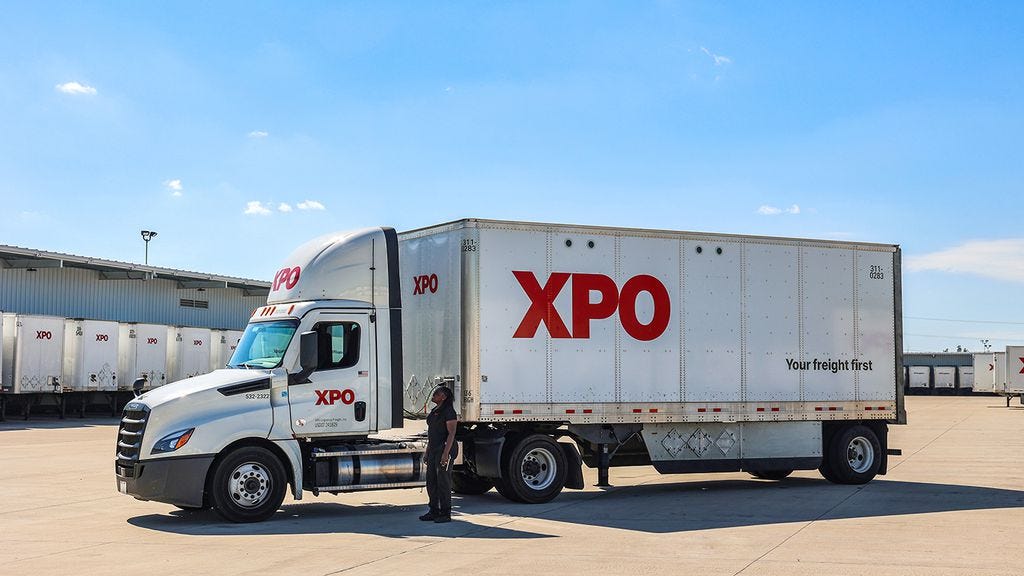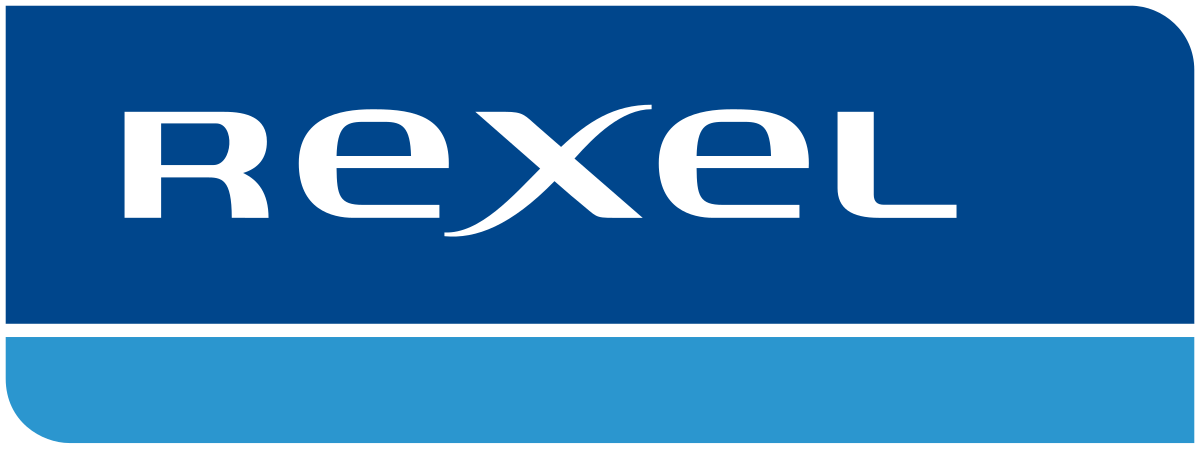📈 QXO Inc. $QXO - Brad Jacobs’ Next Big Build
A Deep Dive into the Past, Present, and Future of This Bold Building Materials Consolidator
Welcome back dear fellow 🧙♂️ Hermits 👋
🏗️ QXO Coverage 👇
Here’s Every Article on Brad Jacobs’ Building Materials Roll Up
Please ❤️ and comment so that more people can discover and enjoy our Substack 😇
Investment Thesis is our core series of posts designed to build a foundational understanding of standout public companies and other compelling investment opportunities. The goal is to develop a timeless grasp of each investment’s inner workings. Each month, we publish a new deep dive.
Today’s breakdown draws from a few dozen pages of notes I originally prepared for a podcast episode on the company.
Rather than let it gather dust, we decided to reshape it into something you could read, reflect on, and (hopefully) learn from. If we put a little extra work, we can now frame it so that you can follow the journey. 🎙️→📝
You’ll also notice the structure of this post is a bit different.
That’s because doing our usual deep scuttlebutt is tougher with larger, less accessible companies. But every now and then, you come across an opportunity where the price is right, the setup is clear, and the decision feels obvious… those are rare, and you can’t let them slip.
Investing is always a game of incomplete information. Sometimes we pull the trigger with just 50% of the picture, and other times we hesitate even with 90%.
QXO firmly sits in the former camp.
Settle in for our 42-minute breakdown of how (and why) we got there.
This content is intended for informational purposes only and should not be taken as investment advice. The author does not represent any third-party interest, and he may be a shareholder in the companies described in this series.
Please do your own research or consult with a professional advisor before making any financial decision. You will find a full disclaimer at the end of the post.
🕰️ The Past
⏳ The Present
🔮 The Future
🏃♂️ The Architect of Roll-Ups: Bradley Jacobs Back in Action
When it comes to executing industrial-scale roll-ups, few equal Bradley Jacobs' track record. Across four decades, it is he who has built not just companies, but entire ecosystems, transforming fragmented industries into multi-billion-dollar empires.
His career acts have followed a familiar pattern throughout. It involves starting from a dislocated industry, layering capital along with rigor, then fast scaling through M&A (and discipline).
One of the most successful consolidators in American business history is attributed to him and his organized approach.
Oil Trading
Jacobs' story starts not in trucking or logistics, but in commodities. In 1979, at just 23 years old, he co-founded Amerex Oil Associates, a physical oil brokerage during a time of global energy chaos.
Just four years later, he sold his stake and used the proceeds to found Hamilton Resources in 1984, an oil trading firm that eventually scaled past $1 billion in annual revenue.
That’s not a typo. A solo founder in his twenties, operating in an unregulated and opaque market, built a global trading business from scratch. It was here that Jacobs sharpened the instincts: move fast, understand cycles, and out-execute incumbents. Sounds easy enough.
United Waste Systems
By 1989, Jacobs had set his sights on the waste management industry. He saw a highly fragmented, operationally inefficient industry ripe for consolidation.
With United Waste Systems, he began acquiring mom-and-pop haulers, applying route density optimization, and improving asset utilization. The company went public in 1992 and was sold in 1997 for ~$2.5 billion.
It was one of the earliest proof points that Jacobs could systematically buy, fix, and scale businesses that most investors overlooked.
United Waste was his playbook prototype.
United Rentals (200-Bagger)
The late 1990s saw Jacobs return with an even more ambitious project. He founded United Rentals in 1997, intending to roll up the fractured North American equipment rental market. By the end of that year, it was public.
Over the next decade, United Rentals grew into the largest equipment rental company in the world, eventually becoming a 200-bagger for early investors.
Jacobs brought relentless acquisition discipline, sometimes closing multiple deals per month, paired with deep integration focus.
His MO: buy small, standardize operations, and create economies of scale that competitors couldn’t match. It’s not exactly sexy work, but it worked like a charm.
XPO Logistics (50-Bagger)
After a brief hiatus, Jacobs returned in 2011 with what may be his most impressive move yet. He invested $150 million into Express-1 Expedited Solutions, rebranding it as XPO Logistics.
From the start, he was clear: this would be another hyper-scale roll-up, this time in logistics and transportation. He took the reins as CEO and majority owner (71%), and over the next decade transformed XPO into a global logistics titan, fueled by a wave of acquisitions and heavy technology investment.
But the real genius lay in how he unlocked value in its later stages: XPO eventually spun off GXO (2021) and RXO (2022), splitting its asset-light and asset-heavy businesses and creating multiple publicly traded winners.
While stepping down as CEO, Jacobs remained executive chairman, ensuring continuity of vision.
It’s been a 50-bagger for early believers.
A Pattern of Obsession and Operational Firepower
Across all ventures, Jacobs rewrote the field layout. Whether in oil trading, garbage collection, equipment rentals, or logistics, the constant has been his obsession with operational leverage, his playbook of disciplined M&A, and his ability to execute at speed.
He builds platforms that scale, attracts A+ operators to implement his vision, and never hesitates to exit or spin-off when the market is ready to reward the underlying parts.
It’s this exact DNA that now fuels QXO Inc., his fifth industrial build, targeting yet another fragmented industry: building materials distribution.
🔍 Business Breakdown
If you’ve followed Jacobs’ career, you know the playbook: find a fragmented, slow-moving, unsexy industry with under-optimized operations, then apply scale, capital, and ruthless execution.
His newest frontier is building products distribution, a behemoth of a sector that turns over more than $800 billion globally, yet remains dominated by regional players and outdated supply chains.
Enter QXO, launched in June 2024 with a war chest of $5+ billion in capital and an ambition to fundamentally reshape how construction materials move from supplier to jobsite.
QXO didn’t IPO the conventional way. Instead, Jacobs engineered a clever workaround using SilverSun Technologies (SSNT), a sleepy software firm.
In a move reminiscent of a reverse SPAC/merger, Jacobs effectively reconstituted the listed shell into QXO , raising billions in capital commitments (including capital from his own PE fund) and installing himself as Chairman and CEO.
It may have looked weird on paper, but it was pure Jacobs: speed, control, and access to public markets without the usual investment banking (wasteful) dance.
By June 2024, QXO became the largest publicly traded distributor of roofing, waterproofing, and other core building materials, with a stated goal to scale to $50 billion in revenue, effectively building a Home Depot-style backbone for the B2B world of construction.
At its core, QXO is a horizontal roll-up of distributors, targeting the thousands of mid-sized companies that supply products like roofing tiles, siding, insulation, fasteners, waterproof membranes, and drywall. These are mission-critical components of every building project, yet the supply chain that moves them is notoriously inefficient with legacy IT, low SKU standardization, and high fragmentation.
Jacobs sees this inefficiency as… margin. Margin that can, of course, be captured through acquisition, integration, and digitization.
He’s betting that, just as he did with United Rentals and XPO, centralizing procurement, optimizing logistics, and upgrading systems can transform a patchwork of mom-and-pop shops into a lean, margin-rich empire.
He’s also applying a strict capital allocation framework, publicly stating he’ll only pursue targets that meet stringent IRR thresholds and integration criteria.
The Deal Spree Summary
Jacobs wasted no time putting capital to work. Within three months of launch, QXO had already swung. Here’s a brief of the (attempted and completed) deals thus far:
September 2024: QXO launched a hostile ~$9.4 billion offer for French electrical supplies giant Rexel. The bid was rejected.
March 2025: QXO completed a hostile takeover of Beacon Roofing Supply for $11 billion, a move that instantly catapulted the company into market leadership in roofing distribution across North America. The transaction is marks the beginning of what Jacobs calls “Phase 1” of QXO’s growth arc.
June 2025: Without skipping a beat, QXO announced an all-cash $5 billion offer for GMS, a top-tier specialty building materials distributor. If accepted, this would further consolidate QXO’s grip on the high-margin segments of drywall and interior construction systems.
We’ll break down the three deals in detail in the next section.
Jacobs has famously closed hundreds of deals, so we can say that the pace is staggering, but not out of character. As with XPO and United Rentals before, Jacobs is compressing a decade of consolidation into just a few quarters. And this ability to close great deals is precisely what makes the opportunity compelling.
The $50 Billion Blueprint
These deals are milestones in a clear, publicly stated strategy:
We’re not here to build a $10 billion company. We’re building a $50 billion company over time, and this is the foundation.
In Jacobs’ eyes, building materials distribution is where equipment rentals were in 1997… sleepy, scattered, and begging to be unified.
🧩 Detailed M&A So Far
⚡ Rexel
Rexel S.A. is a French-headquartered global distributor of electrical supplies, automation components, and energy-efficiency products. With roots going back to the early 20th century and a public listing since 2007, it operates as a mission-critical middleman in the construction, renovation, and industrial maintenance ecosystem. They essentially link thousands of suppliers (e.g. Schneider Electric, Siemens, ABB) with electricians, contractors, and industrial clients across more than 20 countries.
The company serves three core customer segments:
Residential (housing developments, renovations, electrical contractors)
Commercial (offices, retail buildings, HVAC, and lighting integrators)
Industrial (factories, automation upgrades, energy efficiency retrofits)
Its product mix ranges from circuit breakers and cables to solar panels, smart meters, lighting systems, EV chargers, and factory automation modules.
Importantly, Rexel has increasingly built out value-added services, like real-time inventory systems, technical advice, B2B e-commerce portals, and even on-site delivery optimization.
With nearly 2,000 branches and 25,000+ employees, Rexel’s scale and logistics network are formidable. In 2023, it posted roughly €18 billion in annual revenue, with EBITDA margins around 6–7%, reflecting the steady-but-thin nature of distribution economics.
Rexel is a European powerhouse and a natural consolidation target for anyone building a global platform in construction-adjacent supply chains.
In September 2024, just a few months after launching QXO Inc., Brad Jacobs made his boldest early swing: a hostile takeover offer for Rexel valued at $9.6 billion (approximately €8.9B at the time, 7.5-8x EBITDA bid). It was an audacious move, a U.S.-listed industrial startup aiming to acquire one of Europe’s largest and oldest distributors, in a foreign (complex) regulatory and political environment.
On paper, Rexel would give QXO immediate European scale, particularly in high-margin segments like smart energy, electrification, and industrial automation.
These are areas benefiting from EU Green Deal mandates and structural electrification tailwinds. Moreover, Rexel’s branch density, supplier relationships, and digital transformation efforts would dovetail neatly into QXO’s long-term platform vision.
Rexel’s board rejected the offer outright.
They cited “strategic misalignment” and “undervaluation” of the company’s long-term positioning. Whether this was a defensive tactic or genuine disagreement, the message was clear: Rexel would not be a quick win. And Jacobs, known for pragmatism as much as persistence, didn’t escalate the fight.
No follow-up bid was submitted, and so… the deal fell through.
Even though the Rexel acquisition didn’t go through, the attempt itself signaled QXO’s ambition to be a truly global consolidator, not just a North American roll-up. It also revealed Jacobs’ willingness to go hostile, fast, and big… a tactic rarely used in European industrials landscape.
The bid exposed two important things:
















